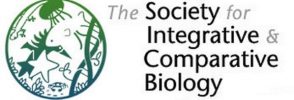Contents
DIZ news: Training the next generation of invertebrate zoologists
Taxonomy and systematics are fundamental disciplines in biology that provide information on the diversity of life on Earth, which is essential to the fields of conservation, ecology, and evolutionary biology. These fields offer the basis for all comparative studies, providing the names by which we call organisms, and a framework that explains their evolutionary relationships. Confronted with a vast number of undescribed species and high rates of extinction, these fields struggle with a lack of trained personnel and time to discover and characterize biodiversity, sometimes before it is lost forever.
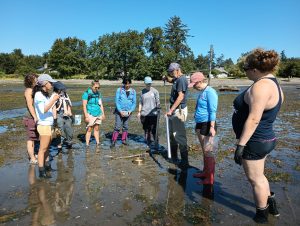
This summer, as part of an NSF CAREER project, Kevin Kocot (University of Alabama) and Ashleigh Smythe (Virginia Military Institute) organized a Meiofauna Diversity and Taxonomy Workshop at the Smithsonian Marine Station in Fort Pierce, FL and Kevin and Gustav Paulay (University of Florida) taught Biodiversity and Integrative Taxonomy of Invertebrates (BITI) at Friday Harbor Labs. The overarching goals these courses was to help train the next generation of marine invertebrate zoologists in practical skills essential for collection, identification, characterization, preservation, and molecular analysis of marine invertebrates combining traditional and modern approaches to characterize diversity. Both courses were joined with world expert taxonomists and other expert mentors who worked closely with students to train them on particular taxa and techniques such as DNA metabarcoding and sampling autonomous reef monitoring structures (ARMS). Students in the BITI course conducted independent projects to assess the biodiversity of a particular taxon or fauna using diverse tools including DNA barcoding and metabarcoding, transcriptome sequencing micro-computed tomography, scanning electron microscopy, macrophotography, light microscopy.
This newsletter features photos of some of the cool critters that the students and mentors in these classes found. Enjoy!
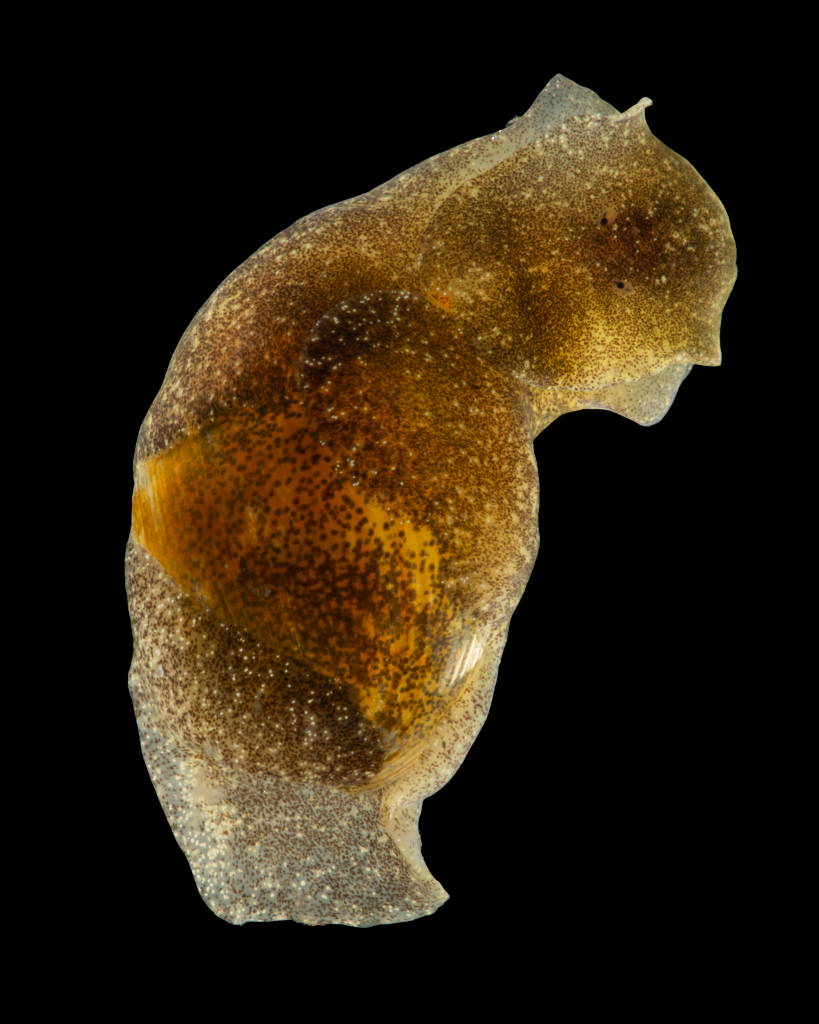
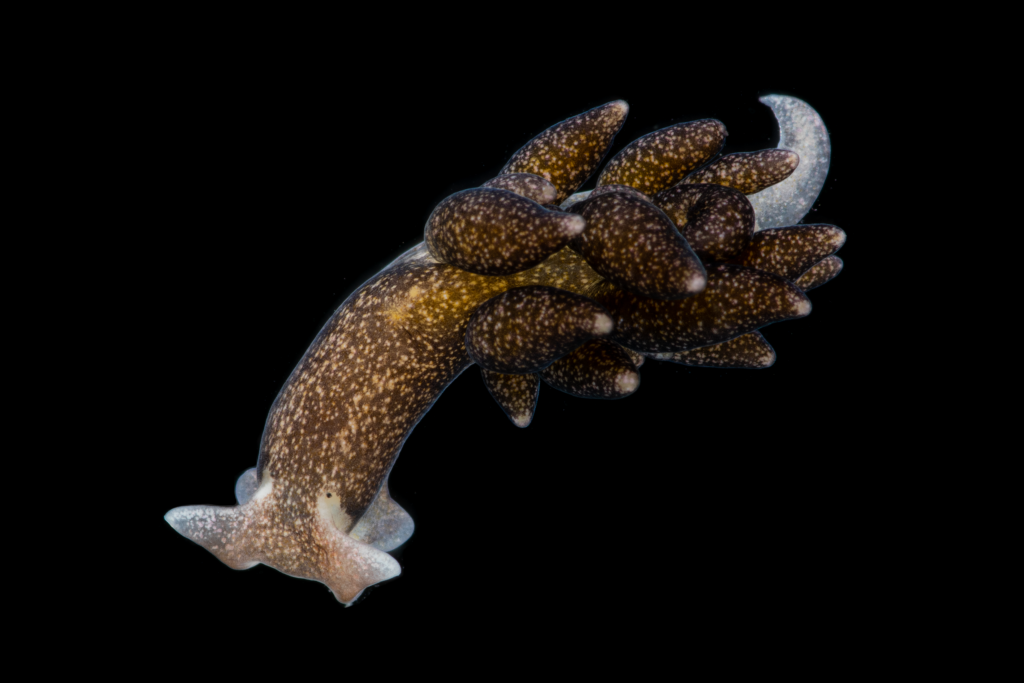
Message from the Chair
Jon Allen, Chair.DIZ@sicb.org
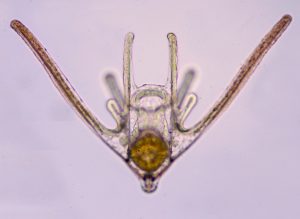
Dear DIZ,
Welcome to Fall! As I write this, the calendar has just officially turned the page on summer, during which I had the good fortune of spending ten weeks at Friday Harbor Laboratories teaching and doing research on brittlestars (photo on the right), which we all recognize as the greatest of the invertebrates. While at FHL, I was teaching a new class on Marine Conservation Ecology that focused on marine/terrestrial subsidies and interactions between the avian and invertebrate faunas (photo below). It was such a joy to teach a field course fully in person again and the students were more eager than ever for hands-on experiences in animal biology. I hope your returns to in-person teaching and learning this past year were equally rewarding.
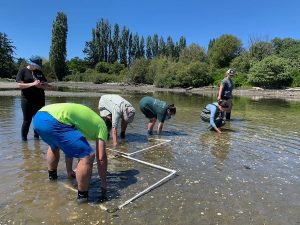
There are many exciting updates for the fall, but I will try and keep them short and sweet. First, the annual meeting in Austin, TX is just around the corner! Last year there was excellent attendance in Phoenix, despite the continuing health concerns. I suspect this year will be a banner year for attendance and presentations. If you haven’t registered yet, keep in mind that the early bird discounted rate is available until December 1st.
Second, if you’re looking for one more excellent reason to attend the meeting, we will be holding our long-delayed Libbie Hyman auction! As you may recall, last year in this space I announced that we decided to postpone the auction for one year. Well, now we are ready to make this happen! Bruno Pernet and Anna Klompen have been working hard gathering donations and making the arrangements for a combined auction/social at the Austin meeting, probably on Friday evening after dinner. If you would like to make a donation, please contact Anna (amlklompen@gmail.com) to make appropriate arrangements. You may recall that Anna has also been running our DIZ twitter account. If you’re not already following the account, please start (@SICB_DIZ). If you have exciting news from your lab that you want us to share, tag @SICB_DIZ in your tweets.
Third, I also need to thank all of the mentors and students who submitted abstracts for the best student presentation sessions for posters and talks. With help from Karen Chan and Justin McAlister we have selected 8 outstanding students for the best student oral presentation session. Once the final program is announced these presentations should all be linked in a single session for ease of attending for our DIZ members.
Lastly, DIZ needs to extend tremendous gratitude to our outgoing Program Officer, Karen Chan. Karen will serve through the end of the 2023 meeting and then pass the torch to our new DPO, Adam Reitzel. Karen has been indispensable for DIZ in her role as Program Officer and as a support and guidepost for my role as Chair. Karen will continue to serve SICB in many ways going forward, not least of which is as an editorial board member for Integrative Organismal Biology. I know that for many of our members, not having a DIZ representative on the editorial board was seen as a real problem. Working with Adam Summers and Melina Hale, we were able to make this happen and I’m very pleased to be able to report that success back to you. I look forward to celebrating and thanking Karen in person in Austin and I can’t wait to see many of you there as well!
Message from the Program Officer
Karen Chan, DPO.DIZ@sicb.org
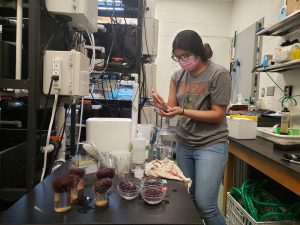
Dear friends,
I am happy to report that our annual in-person gathering is back in full swing. With over 1800 abstracts submitted for the upcoming meeting in Austin, the number of attendees is reaching the pre-pandemic level. I am keeping my fingers crossed for no new variants or viruses.
There will be three exciting society-wide symposia in January 2023. They are “Envisioning a Diverse, Inclusive & Safe Future for Field Biology,” “Sexual diversity and variation,” and “Large-scale biological phenomena arising from small-scale biophysical processes.” These presentations will also be broadcasted live via SICB+. As the organizer of the symposium on biophysical processes, I promise cool talks with wonderful invertebrates are on the schedule. We are also supporting two additional symposia entitled “Genomics of marine larval evolution and development” and “Neuroethology in the age of gene editing: New tools and novel insights into the molecular and neural basis of behavior.”
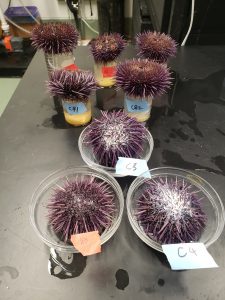
Aside from attending both the symposium and contributed sessions, do not forget to support our students by attending the Best Student Oral Presentation: Mary Rice Award session. If you are interested in serving as a judge in the best student presentation competitions, oral and posters, please reach out to me via email (DPO.DIZ@sicb.org). Let me take this opportunity to thank all our student members for choosing to present with DIZ and our panel for selecting the eight oral presentation finalists within a short time frame.
As your plan for your travel to Austin, please make sure to stay for the evening of Jan 7 for the society-wide celebrations. Rumors have it that there will be drinks. Unlike previous years, there will be a full day of presentations on the last day and two special lectures (the postponed Tyrone Hayes lecture and the Moore lecture).
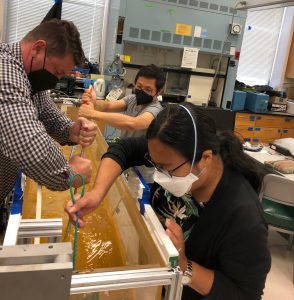
Finally, it is bittersweet that this is the last divisional newsletter from me as your Division Program Officer. My term is ending after the January meeting. The capable Adam Ritzel will be your next DPO. Please welcome him and support him by working with him on symposium proposals and other programming matters.
Having said that, I am not going anywhere and will be serving you as SICB’s Member-at-Large when I step down from DIZ. Therefore, please do not be a stranger and reach out if there are SICB matters that I can help with.
Looking forward to seeing you in Austin.
Message from the Secretary
Kelly Dorgan, secretary.diz@sicb.org
Dear DIZ,
I’m excited to share with you all some news and photos from Kevin Kocot’s recent courses on invertebrate diversity at the Smithsonian Marine Station and Friday Harbor Labs I’m hoping to include more interesting stories of things you all are doing, so please reach out to me if you are teaching a course or doing fieldwork somewhere exotic (or somewhere with fun inverts, which is really anywhere, right?) and want to share your experience with the DIZ community. Thanks to Kevin for sharing an overview of his courses and goals in training the next generation of invertebrate zoologists. Continuing Kevin’s training efforts, Kevin, Ken Halanych and I will be organizing a meiofauna workshop at the Dauphin Island Sea Lab next May – students, if you’re interested, we’ll be advertising soon, and please reach out to Kevin or me anytime for more information. Hope to see you all in Austin!
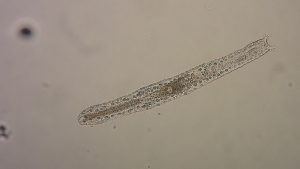
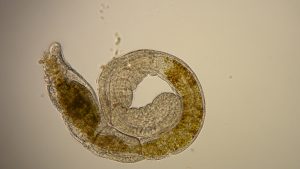
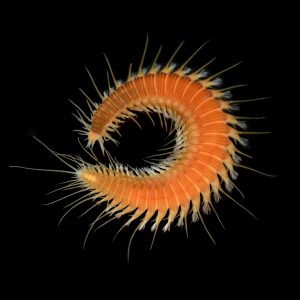
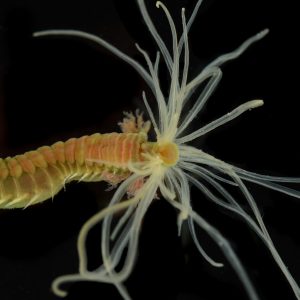
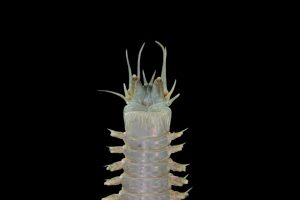
Message from the Libbie Hyman Scholarship Selection Committee
Abigail Cahill, Committee Chair, acahill@albion.edu
Hello fellow invertebrate-lovers! I am here with an update from our amazing 2022 Libbie H. Hyman Memorial Scholarship award winners, but I do have some business to cover.
First, many, many thanks to all of you for your continued financial support of the Hyman Scholarship Fund through your generous donations. The Libbie H. Hyman Award provides funding to support the first significant field station experience for advanced undergraduates or early career graduate students pursuing coursework or research on invertebrates. This first field station experience is typically a transformative period in the career and life of a student. Field station costs are ever-higher, and the scholarship makes a real difference to students. To make a contribution to the fund, click on ‘Donate to SICB’ on the SICB home page (http://sicb.org) or send a check to the address below. All contributions are tax deductible.
SICB Business Office
Libbie H. Hyman Memorial Scholarship Fund
950 Herndon Parkway
Suite 450
Herndon, VA 20170 USA
Second, please also keep an eye out regarding our upcoming invertebrate-themed auction to support the scholarship fund. We had to miss the auction last year in Phoenix, but hopefully this year in Austin will be as much fun as it always is! Another great way to contribute is by donating items to the auction; proceeds go to the scholarship fund.
And last from me, encourage students to apply for the scholarship! The deadline for 2023 is February 6, and the application will be online very soon at https://sicb.org/libbie-h-hyman-memorial-scholarship/. If you or your students have questions about the application process, please feel free to contact me via email.
Now, here are the reports from our 2022 scholarship recipients, in their own words. Thank you all again for contributing to their research experiences this summer.
Uzuki Horo, Massachusetts Institute of Technology
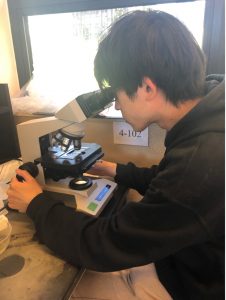
I have been interested in how the diversity of organisms could arise from the universal principles of biology. Though my undergraduate education at MIT provided me with knowledge and experience in genetics, cell biology, and computational biology, I lacked exposure to the diversity of development, life-history strategy, and ecology of animals that emerged through evolution. The Evolutionary Development of Marine Invertebrates summer course at Friday Harbor Laboratories (FHL) of the University of Washington was a perfect opportunity to immerse myself in natural history. I am very grateful that Libbie Hyman Memorial Award financially allowed me to join this course. Collections, observations, and drawings of tens of animal phyla were a series of true astonishments. One example is the articulate larva of brachiopod, whose eye spot number varies greatly from larva to larva. In the photo, there were two eye spots on the left and three on the right. There were also larvae with three or four eye spots from the same parents. This variation in the number of eye spots led me to ponder on the relationship between developmental plasticity and selective pressure (Is the variation in eye spots due to the lack of selective pressure on this phenotype? Or is it beneficial to have variation in eye spots in population level?) and on the modularity in different developmental units (an individual eye spot seems to be a robust developmental unit, whereas their arrangement in the apical lobe and integration of information with the nervous system are looser as a developmental unit).
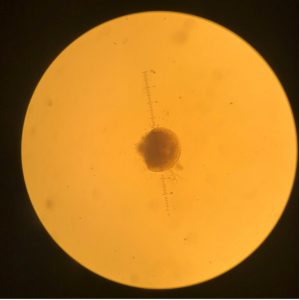
As wonderful as the direct exposure to the diverse animal developments were the encounters with people during my time at FHL. Discussions with like-minded students and researchers from various backgrounds ranging from cell type evolution in cnidaria to oyster aquaculture helped me to embrace the breadth of research and connections of different disciplines enabled by marine stations. Furthermore, I really liked the environment that allowed me to dialogue with nature. In the middle of the course, Dr. Richard Strathmann advised me to take some time to “meditate on embryos.” In the era of rapid technological developments and progress in biology, and being at institutions like MIT, I find it sometimes difficult to think freely and deeply about fundamental questions. The time and people at FHL reminded me of the importance and richness of thinking complemented with observations and experiments.
Isabel Pen, Ohio State University
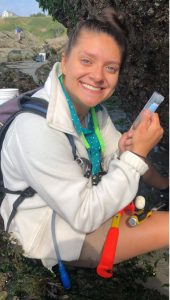
This summer, I spent five weeks on an island in the northwest corner of the country, exploring the beaches and examining all sorts of marine invertebrate phyla. Participating in the Biodiversity and Integrative Taxonomy of Invertebrates (BITI) course at Friday Harbor Labs was an incredible experience. Under the guidance of Drs. Kevin Kocot and Gustav Paulay, I learned how to apply the skills critical to documenting and investigating biodiversity in the field.
My project focused on collecting, photo vouchering, subsampling for use in molecular work, preserving, and barcoding as many sea anemone specimens as possible, with an emphasis on taxonomic diversity. San Juan Island, WA was the perfect locale to conduct this project, as the Salish Sea is home to an impeccable fauna of diverse marine invertebrates. I spent many long days walking beaches and searching tide pools for any signs of waving sea anemone tentacles and many late nights in the molecular lab extracting DNA and running PCRs.
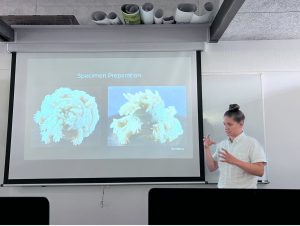
Receiving the Libbie H. Hyman Memorial Scholarship allowed me to not only learn how to conduct research in the field, at an incredible field station, but also to learn directly from experts in this field. I also made connections with other students who are passionate about documenting invertebrate biodiversity. Interacting with other scientists in this environment allowed me to expand how I think and I was able to generate new ideas that I plan to apply to my PhD research.
I am extremely grateful to have received the Libbie H. Hyman Memorial Scholarship because this experience truly influenced my trajectory and gave me memories that I will cherish for the rest of my life. Thank you.
